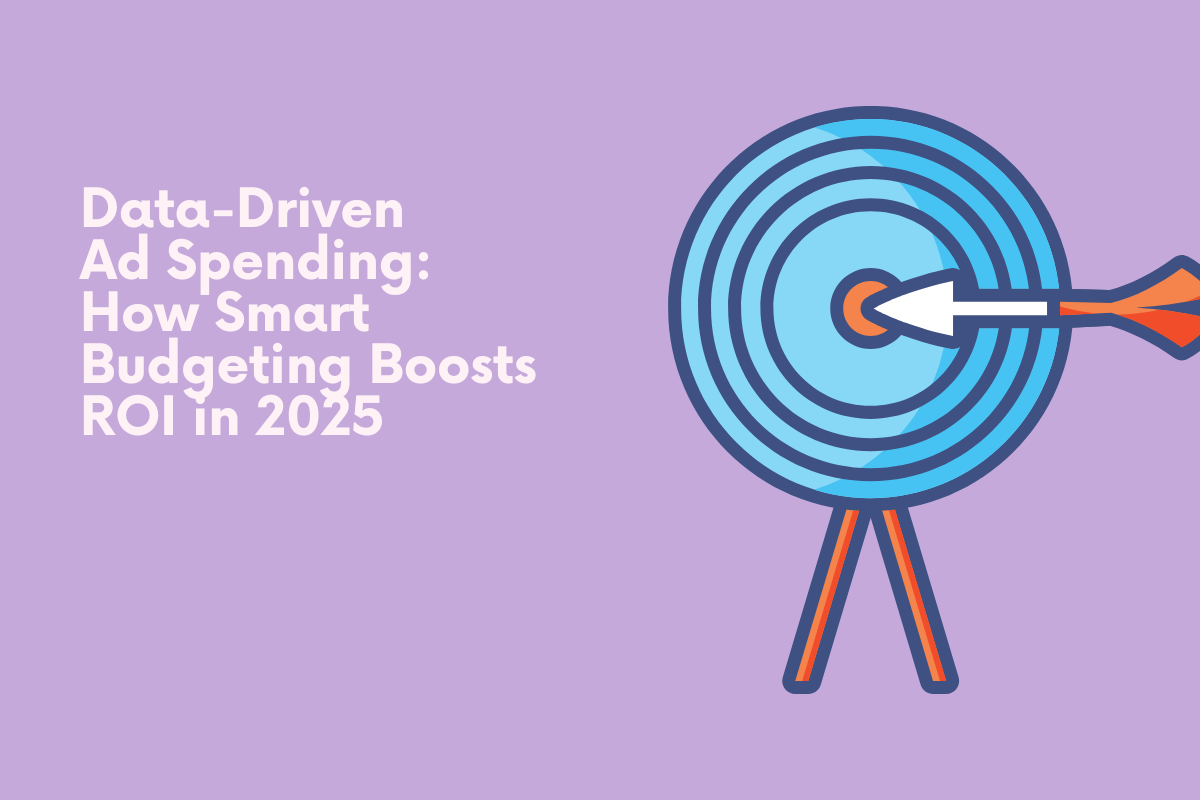When it comes to ads, every dollar counts. If you're an entrepreneur or business owner, you need to make clear decisions based on data, not just hunches or trends. That's where data-driven ad spending comes in. By allocating your budget based on insight from analytics, your advertising campaigns will have better targeting and stronger performance. This leads to a much higher return on investment.
In 2025, there's more competition in advertising spaces than ever before. From traditional media and out-of-home placements to digital spaces like social media and livestreaming, global ad spend is projected to reach $992 billion by the end of 2025. Using data to guide your advertising budget does more than cut waste. It helps sharpen your strategy so your business can outperform your competition.
In this article, we're breaking down the basics of data-driven ad spending and how smart budgeting can boost your ROI in 2025. Let's go!
What is Data-Driven Ad Spending?
If you're unfamiliar with the term, data-driven ad spending is a simple concept. It's about using real-world data to make smarter decisions about how much money you spend on your advertising campaign.
Instead of relying on generalized statistics, broad industry trends, or basic assumptions, this approach to ad spending makes decisions based on:
- Performance metrics
- Behavioral data of actual customers
- Predictive analytics
Marketers use data that's recent, not just historical, and apply it to all aspects of an ad campaign. It informs decisions about what types of ad content to use, where to run your ads, and how to split your budget across multiple channels. For example, if the data shows that your paid search ads generate more revenue than social media, a data-driven ad spend strategy means adjusting your budget to spend more on paid search.
Why Data-Driven Ad Spend Matters
In 2025, a data-driven ad spending strategy is more important than ever before – especially for digital marketing. With the advent of AI tools and more sophisticated forms of automation, marketers can adjust their advertising in real-time to reflect consumer behavior. If you're not keeping pace with these technologies and trends, you risk missing out.
Additionally, advertising faces challenges from the rising costs of platforms like Google Ads and Meta, privacy regulations that make tracking more complicated, and media-savvy customers who are often more skeptical of ads than ever before. To succeed in this digital climate, smart budgeting is critical.
By relying on data-driven insights and tools, you'll be in a better position to adapt to different segments, personalize your campaigns, and reduce wasted ad spend.
How to Measure the ROI of Ad Spending
No discussion of media buying and ad spending is complete without ROI: Return On Investment. While it's easy to get caught in the weeds of surface-level metrics like reach and impressions, ROI reflects a comprehensive picture of your strategy. It shows how much revenue you're earning from your ad spend.
Is your campaign driving qualified leads and converting browsers into buyers? Or is it simply wasting your budget? Measuring your ROI helps you understand this. Then, if your results aren't close to your goals, you'll know to go back to the drawing board – or in this case, the data – and refine your campaign.
To calculate the ROI of your ad spend, subtract the total cost of your campaign from the revenue it generates. Then, divide that number by the total cost and multiply it by 100 to get a final percentage.
Other Key Metrics
ROI is one of the most important metrics to consider in data-driven ad spending, but it isn't the only KPI (key performance indicator). As you develop your strategy, pay attention to other metrics such as:
- Cost Per Click (CPC): The amount you pay every time someone clicks on a digital ad.
- Click Through Rate (CTR): Percentage of viewers who click after seeing an ad.
- Customer Acquisition Cost (CAC): The total cost incurred to gain one new customer.
- Customer Lifetime Value (CLTV): The estimated revenue each customer will generate for your brand over their purchasing lifetime.
Strategy Tips for Data-Driven Ad Spending
Data-driven ad spending doesn't just mean plugging numbers into a spreadsheet and automating the results. It requires a strategy that's flexible, adapts to meet real-world conditions, and helps your brand respond as conditions change. If your budget is locked into a system that doesn't consider data-backed insights, you'll lose out.
Here are some tips to develop a clear, focused ad spend strategy that relies on data and analytics:
Keep Your Budget Flexible
Think of your advertising and media buying budget like a draft, not a final version. Even if you're working with a limited budget, you don't have to be limited in how you spend it. Leave room to shift your budget from one platform to another based on performance data.
Check Performance Regularly
In the fast-paced digital world of 2025, quarterly or monthly performance reviews aren't enough. Your ads' performance can change from week to week. While you shouldn't change your entire strategy if you have a bad day or two, you should check your metrics at least once a week to observe how they're performing.
If a pattern emerges in the data, you'll be able to use it to your advantage sooner than if you waited for a monthly report.
Think Big Picture
Although we recommend keeping a close eye on your campaign, don't get so lost in the details that you lose sight of the big picture. One of the biggest pitfalls in budgeting ad spend is optimizing for the "easiest" metrics.
Marketers often make the mistake of funneling more cash into campaigns with the cheapest clicks or the most impressions. However, these campaigns may not yield high ROI. Make sure your strategy includes user behavior and an understanding of what consumers do after they click your ad.
Run Tests with Caution
Testing is an important part of data-driven ad spending, but it shouldn't be guesswork. Whenever you experiment with your campaign, it should be guided by a clear hypothesis inspired by your data. For example, if you notice a specific demographic segment seems to respond more favorably to your ads, consider earmarking more of your budget to target this audience.
But don't run wild. Use a small portion of your budget for testing with clear criteria for success. Give your experiments time to gather meaningful data from the results. If something shows promise, you can scale it. If not, you’ve kept the risk small.
Building a More Adaptive Budgeting Strategy
Smart ad spending doesn't mean spending less. It means spending your budget based on the best available data to give your campaigns the best opportunity for success. By using data to influence your decisions, you can adapt in real-time and stretch your dollars further.
Whether you're running a small ecommerce business or managing multimillion-dollar campaigns, the same rule applies in 2025: when you let data drive your ad spending, ROI follows.





.png)